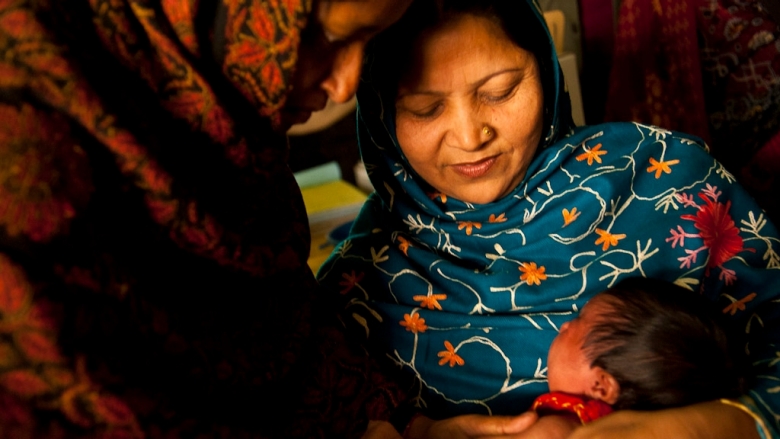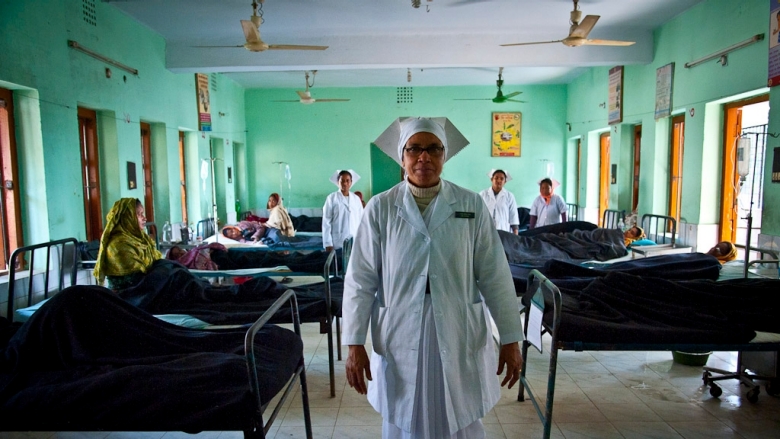Challenge
Significant development challenges remain in the health sector, including poverty, insufficient resources for health, changes in spectrum of diseases, malpractice, and poor health knowledge. The percentage as well as the absolute number of malnourished women and children in Bangladesh remains among the highest in the world. Added to this is the increasing and changing demand for health services, influenced by aspects such as population dynamics; urbanisation and climate change. The fiscal space of the country is restricted given the lowest tax-to-GDP ratios that limits the government’s capacity to translate this growth into public revenues. Public spending on health is low in comparison to other countries. Many patients are paying out of their own pockets to access medical services. The high health expenditure pushes poor people further into poverty.
Approach
HSDP is a follow-on program to the long standing World Bank support for the Government’s sector wide programs in the health sector. Based on the successes and lessons learned from the past programs and in recognition of the challenges ahead, the Government initiated a $8 billion sector wide program, the Health, Population and Nutrition Sector Development Program, from 2011 to 2016. The HSDP of the World Bank, finances a slice of the Government’s program and is fully aligned with it, playing an important role in operationalizing commitments to improve essential health services and strengthen the systems.
HSDP supports the Ministry of Health and Family Welfare (MOHFW) in implementing the program. Essential services include improving reproductive health, from family planning and antenatal care to scaling up emergency obstetric and newborn care services and ensuring 24/7 services in selected district hospitals and upazila health complexes. Health system strengthening includes interventions for better health sector planning and resource management, health financing system development, human resources development, health information systems and maintenance of health care facilities.
The MOHFW is also working towards improving the control and treatment of both communicable and non-communicable diseases. Communicable diseases are being addressed through: vaccination programs; scaling up HIV/AIDS interventions for the most-at-risk groups; improving the quality of treatment for tuberculosis; and strengthening malaria control and treatment in 13 highly endemic areas.
For non-communicable diseases, interventions are aimed to improve awareness of cardio-vascular disease risks, provide better diagnosis and management of diabetes and improve screening for cancer.
The program is subject to annual audits and the Bank is working with the Government and other Development Partners to put in place appropriate mitigation measures, particularly on fiduciary aspects. Independent internal and external financial audits are helping to identify areas of weakness and recommend measures to improve compliance with internal control mechanisms so as to mitigate risks and to build capacities in carrying out financial management and procurement activities efficiently. Development Partners have created a joint-donor fund for a consolidated technical assistance, which is helping the Government to tap on to the required expertise.
HSDP includes a Multi Donor and a Single Donor Trust Fund of $380 million and the World Bank’s IDA credit of $508 million. Seven development partners have pooled their finances in the Multi-Donor Trust Fund: the Government of Australia acting through the Department of Foreign Affairs and Trade (DFAT); the Government of Canada, represented by the Global Affairs Canada (GAC); the Federal Republic of Germany through KfW; the Government of Sweden, represented by the Swedish International Development Agency (Sida); United Kingdom of Great Britain and Northern Ireland represented by the Department for International Development (DFID); the Embassy of the Kingdom of the Netherlands (EKN); and the United Nations Population Fund (UNFPA). The Single Donor Trust Fund includes resources from the U.S. Agency for International Development (USAID).


